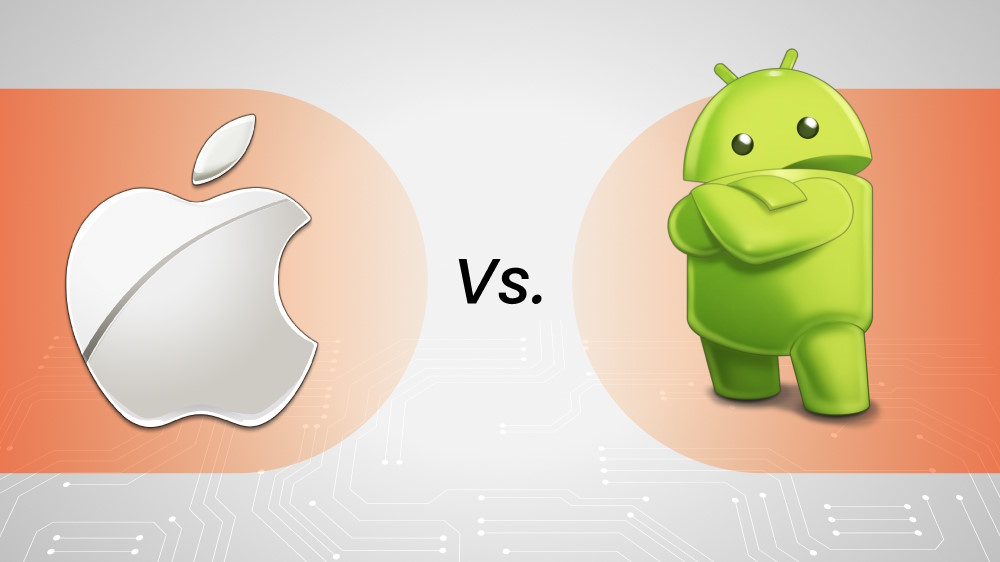Software Development Strategy: Challenges, Complete Guide, and Best Practices
Ready to unlock the full potential of your software projects? Discover how to transform challenges into opportunities with a software development strategy that drives success.

Content Map
More chaptersThe software development process is a long-term investment journey. Win it, you reap a positive ROI software. Lose it, you waste your efforts and resources in vain.
Yes. The reality is that a software development project does not always succeed. There are many reasons for failure: unrealistic constraints, lack of leadership, unclear objectives, poor communication, etc. No matter the causes, they all stem from the lack of a comprehensive software development strategy. Going with your instinct and past experiences without proper planning and documentation can result in losing direction and deviating from the initial implementation goals.
What does an effective software development strategy look like? In this article, we will provide everything you need to know about this strategy and help you deliver quality software.
What Is a Software Development Strategy?
Software development strategy is a comprehensive strategic plan that provides an overview picture of your future project. It covers all macro factors, such as the processes, approaches, and methodologies that are related to the development process, helping to orient and keep the development team and related departments on track to coordinate closely to achieve common results.
Unlike detailed implementation plans, software development strategies solely act as a roadmap or guideline and mainly have an orientation effect. The way to build such plans varies depending on the specific characteristics, goals and requirements of the business.
Key components of a software development strategy typically include:
- Objectives and goals
- Software development methodologies
- Resource allocation
- Risk management
- Timeline and milestones
- Scalability and maintenance
- Stakeholder engagement

Why Do Software Development Strategies Matter?
Starting your software development process without knowing where to begin, what to do next, and who is in charge of what tasks is like going on a road without knowing the destination. This is considered a risky move because it can lead to many unpredictable consequences, the most serious of which is project failure. Why?
Having an innovative business idea in place is a great starting point. However, don’t think that’s all it takes to create the success. These ideas may help in the early stages of a project, but without a solid software development strategy, you easily risk drifting into confusion, chaos, and making mistakes over time. Do you want to start a project quickly and then spend time and effort just to refactor/fix it?
Obviously, building a reliable software development strategy takes your initial time. Still, it brings countless long-term benefits that help your project develop sustainably while ensuring alignment with business goals. In short, benefits of building a software strategy include: improved efficiency, better resource management, enhanced team collaboration, increased customer satisfaction, and risk mitigation.
Top 4 Software Development Strategies: A Complete Guide to Success
Conduct a Feasibility Study
A feasibility study is defined as a detailed analysis that includes various critical aspects of a proposed project to evaluate its practicality and potential success. With such thorough research conducted in the early stages, businesses have a stronger foundation to ensure their software investment yields true value and achieve the desired ROI.
During this phase, software development teams or stakeholders play a very important role as they bring valuable insights based on diverse angles, including technical, financial, and market perspectives, contributing to a more comprehensive evaluation of the project. Clear communication is a must to ensure transparency and coherence of data flow between departments.
Developing a feasibility study involves several key components, including:
- Project Scope: Understand what you aim to achieve and outline the project’s specific objectives, goals, and requirements.
- Preliminary Analysis: Identify potential obstacles and decide whether the future project is worth further investing or not.
- Market Research: Analyze the market to better understand demand, trends, and competition.
- Financial Assessment: Estimate the costs involved to determine the financial viability of the project.
- Technical Feasibility: Evaluate the technical resources required and ensure that the necessary technology and development tools are available.
- Organizational Feasibility: Assess whether you have the staff, skills, and management support required to execute the project.
- Legal and Regulatory Considerations: Ensure compliance with relevant laws and regulations.
Once you have answers to all the factors listed above, compile all the findings into a comprehensive report and make a final assessment of whether to proceed with the project, modify it, or abandon it.
Allocate Necessary Resources
Thanks to the feasibility study results, planning resources becomes easier as you understand what your business has and lacks. Resources in this situation are not only about budget, but also about technology potential, tools, human resources, and time.
After identifying all the resources required for the project, your task at this stage is to allocate each item in more detail and schedule them appropriately to ensure that your project is always supported effectively and executed efficiently without budget overruns.
Tasks in the resources planning step may include explicitly identifying which programming languages and frameworks are appropriate to meet the technical needs of the project; identifying roles such as developers, designers, testers, and project managers and assigning them tasks; and allocating the financial resources according to priority. Of course, solutions to adapt to changing environmental conditions to minimize the impact on the planned strategy also need to be taken into consideration.
Select Appropriate Methodologies
The chosen methodology has a profound impact on the workflow and processes throughout the project. Get it wrong, and you may find yourself back at square one while wasting time and resources. Get it right, and you better streamline processes and keep the project on schedule.
Typically, options for businesses include Waterfall and Agile methodologies. While Waterfall is for clear structure, Agile software development methodology is for flexibility and rapid iteration. There is no general formula for choosing software development methodologies, as each project has its own requirements, team capabilities, and characteristics.
Set Realistic Timelines
The work items are there, but what is next? Yes, a realistic schedule for every single task, from the main functions to the sub-tasks. While planning for main tasks is quite common, many businesses overlook the importance of small tasks, which also add value to the project and need to be properly arranged.
The process of setting timelines should start by breaking down the main tasks into smaller units for easier management. Then, create a specific schedule for each task. This division may be time-consuming at the beginning, but it facilitates evaluating work efficiency and tracking project progress. With a fixed timeline, business owners also motivate the development team to expedite project completion.
However, it is worth noting that the timeline must be set in a clever and realistic way. There are some phases of the project that take more time than others, and unforeseen challenges are inevitable. Instead of rushing to market, make sure your final product is always the best quality version.

Challenges in Software Development Projects You May Encounter
Ensuring Scalability
Business direction often changes due to technological advancements, market trends, and user behavior. These shifts leave many project managers confused about building their own software development strategy, not even knowing where to start to ensure long-term effectiveness. Should I develop a plan that fits my business’ current state or do it to ensure future scalability? As future uncertainty is inevitable, building a software development strategy that meets both current and changing scalability needs can be complex.
Handling Technological Changes
The rapid pace of technological advancements requires software development strategies that can incorporate new tools, platforms, or programming languages. As creating a solid software plan requires adherence to business requirements while staying fresh and current, project managers often find it difficult to develop a long-term strategy. Even when they complete a long-term software development strategy, refining it to adapt quickly to new tech trends is a big problem due to employee resistance or steep learning curves.
Risk Management
Risk management is a challenge not only in the development plan phase but throughout most project phases. It is crucial for business owners to prepare measures to protect user data and confidential information before they have a chance to occur. However, as cybersecurity risks show no sign of slowing but introducing new cheating methods, creating effective plans to mitigate threats can be challenging, particularly when resources are limited.
Managing Stakeholder Expectations
In addition to the business goals, effective software development strategies must also meet the needs of stakeholders. However, as the perspectives of project managers and stakeholders may differ due to different priorities and visions, the final development plan may not fully satisfy the requirements of all parties, leading to the final product deviating from the overall direction of the company. How to balance the varying expectations of stakeholders and the budget, personnel, and time constraints of the project is also a big problem for entrepreneurs in the strategy-making process.

Best Practices and Tips for a Successful Software Development Strategy
Adopt Microservices Architecture
If you plan to build a large application with multiple distinct components, adopting microservices can offer significant advantages. Microservices refer to design approaches in which apps are composed of independent services that can communicate with each other over a single network.
Because each major component of an entire application operates and scales independently, this software development approach allows different development teams to work on different services simultaneously, increasing deployment efficiency and shortening time to market. Even the introduction of a failure of one service doesn’t necessarily impact the entire system, giving businesses more peace of mind when updating, refactoring, or replacing individual components.
Prioritize Communication
“Communication is key” is one of the most mentioned tips in every software development guidance. In the process of building new software solutions, communication plays the most important role in ensuring everyone is working towards the same objectives. In creating strategies, open lines of communication help project owners understand the exact expectations of related stakeholders, as well as any potential constraints coming from departments, which are crucial for realistic strategy planning.
In case your team is a collection of remote developers, it is recommended to establish regular check-ins and clear communication channels to keep everyone aligned and informed. In addition, you can use additional collaboration tools available on the market to increase communication efficiency anywhere, anytime.
Focus on Customer-centric Approach
Types of software products are born to serve the needs of end-users. There are many applications in the market today that have great user experiences but lack the ability to solve customer pain points, leading to unexpected failures. The above example demonstrates the importance of end-users in every process, including software planning.
In addition to getting feedback from stakeholders about the future product, make sure you always keep the customer at the center throughout the development process. How do customers currently solve the problem? Is this feature engaging enough for users? List as many customer-centric questions as possible to get a more comprehensive view of your product. Try to gather user feedback early and often to update them on their changing needs for a particular application.
Use Prioritization Techniques
When developing your own software development strategy, don’t try to cram too many milestones and components into the plan, as this will likely leave you feeling disoriented during implementation. Instead, start small by focusing on the main processes and gradually update the sub-elements to create a complete strategy.
You can use some popular prioritization methods such as MoSCoW to organize and manage work more effectively. MoSCoW is a technique that helps teams decide and focus on delivering the most valuable features first by categorizing tasks into varieties including Must have, Should have, Could have, Won’t have. This method is especially suitable for projects where resources are limited, or timelines are tight.

Final Note
However, it is worth noting that software development strategies are not everything. Have you ever wondered why some people succeed with the same business idea while others do not? A robust software development strategy only serves as a foundation to help the software development life cycle run smoothly and stay on track. It is how you implement the project that makes the difference.
The success of any project is largely attributed to the expertise of a skilled team of developers. If you have a great business idea in mind and can’t wait to make it happen, contact Orient Software to speed up the product completion process and create a competitive advantage. No more lengthy hiring process, we have an available dedicated team ready to join your project at any time.







